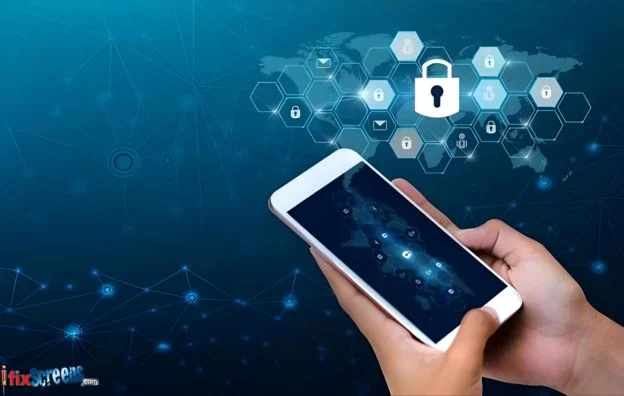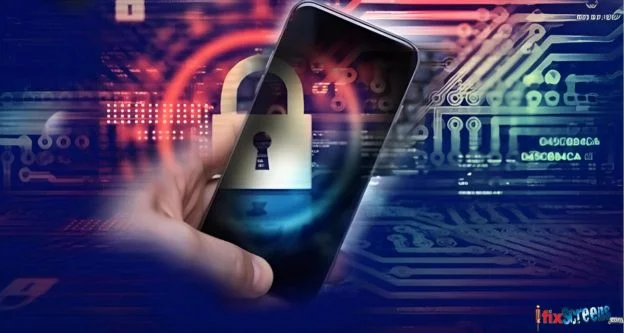How New Phones Shield Users from Cyber Threats?
Adulting can get tough. You need to eat your greens, exercise, get enough sleep, pay your bills, and always remember to protect your phone. As smartphones have become an integral part of our daily lives, mobile security has become an unavoidable topic. Cybersecurity in smartphones is already provided by default but is often simply not active. We suggest you use the full smartphone security features.

Key Takeaways
- Utilize biometric authentication like fingerprint readers or facial recognition for secure access control.
- Set up a VPN on your smartphone to encrypt your internet traffic and protect your IP address.
- Encrypt your data with a strong password or PIN code to prevent unauthorized access.
- Take advantage of secure enclaves in modern smartphones to store vital information securely.
- Regularly review and manage app permissions to ensure applications only have access to necessary services.
- Enable remote data wiping to safeguard personal information in case of loss or theft.
How to Protect New Smartphones From Cyber Threats?
#1 Biometric Authentication
Biometric security utilizes biometric data for identification, access control, and authentication. Hardware components, like cameras or fingerprint readers, collect biometric data that is then scanned and compared algorithmically against information stored in a database. When the two sets of data match, the individual's identity is authenticated, and access is granted.
In terms of access control and identity authentication, biometric security examines biometric data. It captures and analyzes this data to verify an individual's identity.
Compared to other authentication methods, such as username-password combinations, biometric security is more resilient and challenging to crack. However, it also poses a greater vulnerability if a data breach exposes biometric credentials. Biometric authentication presents both a powerful tool and a cybersecurity industry challenge.
#2 Set up a VPN
For advanced phone security, you need additional security tools. New smartphones already have the necessary functionality; you just need to configure the connection. The same VPN is configured through the network settings, redirecting your traffic through an additional server. In this case, the traffic is encrypted before sending and decrypted on the server. This way we can hide our IP address by replacing it with the server IP address. If you do not understand the importance of protecting your real IP address, you should understand what someone can do with your IP and what risks it entails. In this case, mobile device protection involves additional configuration and the use of a subscription to a VeePN service.
#3 Encrypting Data with a Key in the Form of a Password or PIN Code
To prevent unauthorized access to your mobile device, it is crucial to create passwords that are strong and unique. Until the password is entered, the smartphone contains all information in encrypted form. If hackers try to extract it, they will encounter the encryption. The password or PIN is the key. A strong password should consist of a combination of uppercase and lowercase letters, numbers, and special characters.
Avoid using easily guessable information such as birthdays or common phrases. Additionally, it is important to use a different password for each account to prevent multiple accounts from being compromised in case of a security breach.
According to the Rochester Institute of Technology, USA, here are three essential tips to remember:
Long alphanumeric passwords are stronger than either a PIN or a pattern.
A common mistake is using passwords like 123456 or password.
Always remember that the longer the password, the more secure it is.
#4 Secure Enclaves
Modern computing devices often include a dedicated hardware chip for storing vital information such as encryption keys and hashes. PCs have a Trusted Platform Module (TPM), while Androids and iPhones have a Secure Enclave. These devices provide an extra layer of protection by securely encapsulating critical information within a trusted system.
This concept is applicable in other scenarios as well. For instance, a bank or jewelry store may have secure premises, but the safe or vault inside acts as an even more highly secure component. Similarly, secure enclaves are being implemented in organizations to protect highly sensitive information by identifying and storing it in a custom-built, secure repository.

#5 Permission Control
Most applications will ask for access to various services on your phone when you install them. In many cases, these permissions are necessary for the applications to function properly.
For instance, a photo-editing app will require access to your camera roll, and a voice memo app will need access to your microphone.
Some applications may request more access than they actually need for basic functionality. Additionally, over time, applications may accumulate unnecessary permissions if their usage changes. Once you grant access initially, it remains unchanged unless you disable it.
To ensure that your applications only have access to what they require, it is advisable to periodically review your application permissions in your settings.
#6 Remote Data Wiping
Imagine a situation where you lost your smartphone or it was stolen. Would you like important information: personal photos, payment information, and notes in a notebook to fall into the wrong hands? Enabling the option to remotely delete all of your phone data would allow you to quickly erase any private information in case of loss, theft, or hijacking. You can do this from any device where you are signed in to your Apple or Google account.
Conclusion
Modern smartphones have quite a lot of technologies that are designed to protect us from cyber threats. All data is stored in encrypted form, there are secure enclaves and biometric authentication technologies. If you were hacked, you most likely did not use some of the listed functions. In this case, there is no need to look for the guilty. Those who have activated the built-in security features can already receive a good level of cyber protection.
FAQ's
Q: What is biometric authentication, and how does it enhance smartphone security?
A: Biometric authentication uses unique biological traits like fingerprints or facial features to verify a user's identity, offering a more secure alternative to traditional password-based authentication.
Q: How can I set up a VPN on my smartphone for enhanced security?
A: To set up a VPN, navigate to your phone's network settings and configure the VPN connection by entering the necessary details provided by your VPN service provider. This encrypts your internet traffic and protects your online privacy.
Q: Why is encrypting data with a password or PIN important for smartphone security?
A: Encrypting data with a strong password or PIN ensures that unauthorized users cannot access your device's information. It adds an extra layer of security, especially in case of loss or theft.
Q: What are secure enclaves, and how do they contribute to smartphone security?
A: Secure enclaves are dedicated hardware components in modern smartphones that securely store sensitive information like encryption keys. They provide an additional layer of protection against cyber threats.
Q: Why is it important to review and manage app permissions on my smartphone regularly?
A: Reviewing and managing app permissions regularly ensures that applications only have access to the resources they need, minimizing the risk of unauthorized access to your device's data.
Q: How does remote data wiping help protect my smartphone in case of loss or theft?
A: Remote data wiping allows you to erase all data on your smartphone remotely in case it is lost or stolen, preventing unauthorized access to sensitive information and protecting your privacy.